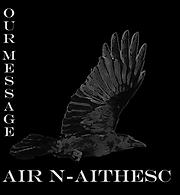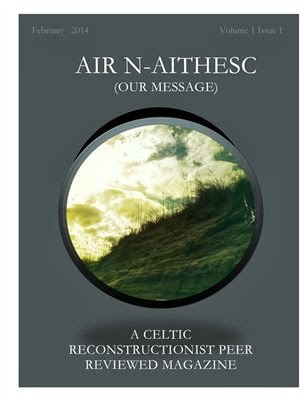Category: werewolves
Save a Celtic hound
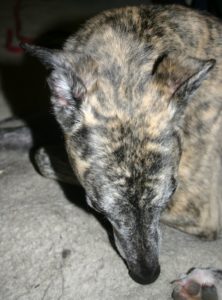 **UPDATE: I realized I should update that we were unable to save our Gráinne. The lymphoma was just too aggressive, she went down hill very quickly and had some sort of episode involving either a lesion or a blood-clot to the brain. She regained her ability to walk after the first one, but the vet was clear that nothing could be done. We planned to take her for her last trip a few days later, but she had another similar episode and we took her to an emergency vet in the middle of the night. We probably do not have to mention that we are devastated as is Gleann. **
**UPDATE: I realized I should update that we were unable to save our Gráinne. The lymphoma was just too aggressive, she went down hill very quickly and had some sort of episode involving either a lesion or a blood-clot to the brain. She regained her ability to walk after the first one, but the vet was clear that nothing could be done. We planned to take her for her last trip a few days later, but she had another similar episode and we took her to an emergency vet in the middle of the night. We probably do not have to mention that we are devastated as is Gleann. **
It been a hell of a year. We lost Sachairi just over a year ago, then found out both Gleann and Gráinne had serious health problems. Gráinne was diagnosed with chronic lymphocytic leukemia (CLL) but her blood count numbers were real low, so during the summer it was a matter of just keeping track while we concentrated on saving Gleann who had a tumor in his parathyroid. We were able to get surgery for Gleann thanks to fund raising, auctioning off some Sarah Connor related stuff, some eBay auctions, help from a dear friend and totally maxing out CareCredit. And then Gráinne’s numbers got higher, not OMG start chemo NOW higher, but high enough we were starting to get her evaluated the first of this year.
And then two things happened. First she developed skin lesions, upping our worry even with the current blood counts. And then my husband Aaron broke his leg. Oh, on top of that at New Years just 12 days before his accident, he had also had his status changed at work from covering stations to only being on-call for transfers, so no disability benefits at all. This leaves us with no real income at all, except for a bit here and there from eBay sales.
Just days before we finally got her to the oncologist for another examination and for more testing, her nose became hugely swollen. It turns out that as well as the CLL she has cutaneous lymphoma, which is the more aggressive of the two.
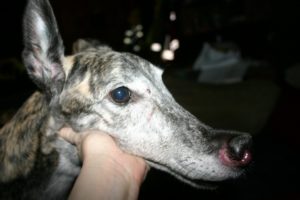
This means that the chemotherapy we were looking at, Prednisone and Leukeran, is not going to be effective. Instead we need a more expensive chemo, CCNU. She would get this every three weeks at $695 each time and require blood work at her regular vet in the weeks in between. AND this needs to start immediately, before the very quick changing lymphoma has a chance to get to the point of no return!
We could see managing if Aaron were working and getting a lot of shifts….but not until then. Which is April! And we have to stat this week! We have raised not quite as much as we have spent in getting her tested and we are struggling to also feed her and the other animals, so we have almost nothing left to our names at all, let alone enough to start this! We really need help!
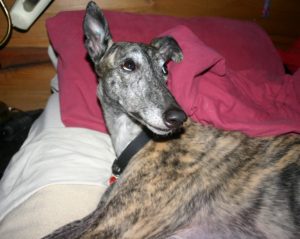 She could have years more with this, it is devastating that we may have to lose her just because Aaron broke his leg!
She could have years more with this, it is devastating that we may have to lose her just because Aaron broke his leg!
Gráinne is our sixth Greyhound, adopted from Greyhound Placement Services, NH as a special needs dog due to having epilepsy. She is beautiful, as you can see, but also quirky and comical. She is not always the easiest hound to deal with, her previous owner has returned her due to her singing in her crate. Honestly, it really is singing, it’s like having a coywolf in your living room. She can be very vocal at anytime she feels she’s not being understood. Not everyone appreciates that as much as we do.
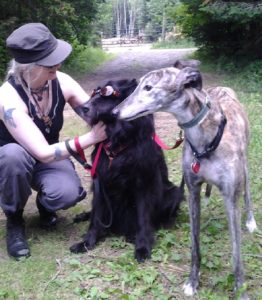 She has had a stressful year, losing Sach was a blow to her, I know. She was stressed as we took care of Gleann’s situation. I feel like we had just gotten to the point where we could all relax and enjoy time together when she got really sick. I don’t want this to have been her last year! I want her to get better, which she has a very good chance of if we start treatment this week, and have a couple of relatively happy years. She just turned 7, she needs more time!
She has had a stressful year, losing Sach was a blow to her, I know. She was stressed as we took care of Gleann’s situation. I feel like we had just gotten to the point where we could all relax and enjoy time together when she got really sick. I don’t want this to have been her last year! I want her to get better, which she has a very good chance of if we start treatment this week, and have a couple of relatively happy years. She just turned 7, she needs more time!
And Gleann needs more time with her. He adores her, he’s lost so many packmates in his lifetime.
Please share the campaign and please help with what ever you can!
My articles and workshop vouchers are available as perks.
The Celtic Hound reference is….because they are!
Excerpt from “The War Goddess’s Bitch”
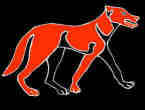 This is from my article in Air n-Aithesc Vol III, Issue 1 currently available in hard-copy or e-copy from this link. Unlike previous excerpts, this in not the beginning of it, as I began with a dream sequence that would be too long for a lead in and I don’t want to post only part of. The article is a continuation of my exploration of the fénnidecht wolf-warrior path, specifically how I follow it as a devotion to the Morrígan and some material on female werewolves, weredogs and dog-heads.
This is from my article in Air n-Aithesc Vol III, Issue 1 currently available in hard-copy or e-copy from this link. Unlike previous excerpts, this in not the beginning of it, as I began with a dream sequence that would be too long for a lead in and I don’t want to post only part of. The article is a continuation of my exploration of the fénnidecht wolf-warrior path, specifically how I follow it as a devotion to the Morrígan and some material on female werewolves, weredogs and dog-heads.
The War Goddess’s Bitch
Wolf-warrior cults are usually attributed to male Gods. The Vedic Indra and Rudra, the Germanic Odin and the Greek Apollo Lykeios have all been associated with wolfish warrior bands.[i] Kershaw states that there are no known Celtic Gods associated with warbands, other than seeing a similarity between Finn and the Fíanna and Rudhra and the Maruts.[ii]Kershaw also mentions McCone’s pairing of Ódinn/Týr and Lug/Núada as teuta/koryos(civilization/warband or wild) God pairings.[iii] Lug is certainly a candidate for such a warrior cults: His relationship to both Cú Chulainn and Finn, adds to this possibility.[iv]While I would not argue against Lug, Finn (as a God, although I tend to focus on his nature as a semi-divine hero) or other Gods as having had such cults, I believe that it is as likely that the Goddesses who fall under the title the Morrígan were also likely to have been the Divine leaders of such cults.
The Morrígan’s interest in Cú Chulainn, the Hound of the Smith, is evident throughout the TBC and related Ulster tales. Some see their relationship as confrontational, often confusing. Epstein has speculated that She may indeed be his patron Deity.[v] Epstein noted that the seemingly adversarial nature of Her relationship with Cú Chulainn can be seen as an effort to strengthen his glory, as I have also explored.[vi] Epstein specifically brought up the similarities between his canine nature, which goes far deeper than just a name, and the Norse ulfheðnar (“wolf coats”) and berserkr (“bear coats”) who followed Odin. She speculated that this might hint at an ecstatic cult dedicated to an Morrígan.[vii]
This ecstatic, shape-shifting nature suggests such a cult as well as the obvious canine connection. Cú Chulainn’s name connects him with canines: he is the Hound, actually acting as Culainn’s guard dog as a boy, to replace the dog he killed.[viii] Yet his form of shape-shifting, his ríastrad (warp spasm), is not decidedly canine. By killing the guard dog and then assuming the dog’s role, Cú Chulainn was transformed completely into a hound not only for his time of service to the Smith but for the rest of his life.[ix]He was always a hound. He was just wilder, more dangerous, rabid, when he transformed and he described himself as having canine fury in Tochmarc Emire.[x]His identity as the Hound was so significant that when St. Patrick conjured Cù Chulainn’s specter in order to convert Lóegaire, the king of Ireland, the specter’s canine nature convinced the king that the specter was truly Cú Chulainn.[xi]
Cú Chulainn’s story gives no indication of him as part of a warband. This lack is likely related to animosity between the church and such warriors they called díberga (marauders, brigands).[xii] It is notable that the ecstatic transformation and the connection to a Deity were revealed at all. When the stories of warbands were finally set down, the Fíanna seem quite divorced from the earlier, negative, accounts of the díberga, that displayed little association with either shape-shifting or Deity.[xiii] The association with hounds is strong in the stories around Finn Mac Cumhail. There are many members of the Fíanna with canine names. However, the fénnidi’s own canine nature is only hinted at vaguely. Finn did have the hood of Crothrainne, which allowed him to turn to hound or stag, yet there is little evidence of him using it.[xiv]In one alternative tale of the birth of Bran, Finn was his father by a woman enchanted into the form of a bitch. One might choose to speculate that he used the hood at that time.[xv]
Read more by purchasing AnA here
[i] Kris Kershaw, The One-eyed God: Odin and the (Indo-) Germanic Männerbünde, Journal of Indo-European Studies, Monograph No. 36., Washington D.C.: Institute for the Study of Man Inc., 2000, such Gods and Their cults are the subject of the entire study, however particular interest might rest in ch. 9 “Odin Analogues” pg. 182-200; Dorcas Brown and David Anthony, “Midwinter Dog Sacrifices at LBA Krasnosamarskoe, Russia And Traces of Initiations for Männerbünde” Paper presented, Conference: Tracing the Indo-European: Origin and migrations. Roots of Europe Research Center, University of Copenhagen, Denmark Dec 11–13, 2012.[ii] Kershaw, The One-eyed God, pg. 186.[iii] Kershaw, The One-eyed God, pg. 195.[iv] C. Lee Vermeers discussed his relationship with Lú Ardáinmór as a lycanthropic God in a blog post http://faoladh.blogspot.com/2013/05/what-i-domy-own-gods-part-one-my-upg-so.html and has also talked about Apollo as a Wind-Wolf God, http://faoladh.blogspot.com/2011/05/gods-and-goddesses-of-werewolves-wind.html[v]Epstein, “War Goddesses,” Ch. 2.[vi]Epstein, “War Goddesses,” Ch. 2; Lambert, “Musings on the Irish War Goddesses;” also further explored in my blog post “The Morrígan and Cú Chulainn part 1: On Saying ‘No.’”[vii]Epstein, “War Goddesses…,” Ch. 3.[viii]TBC Rec 1 pg. 17-19,140-142; TBC:BOL pg. 23-25, 160-163.[ix] McCone, “Aided Cheltchair Maic Uthechair: Hounds, Heroes and Hospitallers in Early Irish Myth and Story.” Ériu 35, 1984 pg. 8-11, I discuss this act as being linked to wolf-warrior initiations in “Going Into Wolf-shape.”[x]Bernhardt-House, Werewolves, Magical Hounds, and Dog-headed Men, pg. 174, 343.[xi]Joseph Falaky Nagy, Conversing with Angels and Ancient: Literary Myths of Medieval Ireland, Ithaca: Cornell University Press, 1997, pg. 274.[xii] Kim McCone, “Werewolves, Cyclopes, Díberga and Fíanna: Juvenile Delinquency in Early Ireland” Cambridge Medieval Celtic Studies, issue 12, 1986, pg. 3-4; Sharpe, “Hiberno-Latin Laicus, Irish Láech and the Devil’s Men,” Ériu 30, 1979, pg. 80-87.[xiii]Kim McCone, “Werewolves, Cyclopes, …”, pg. 3-4; I discuss other links between the díberga and the Fíanna and canine nature further in “Going Into Wolf-shape” as well.[xiv]Kuno Meyer, ed. and trans., “The Finn episode from Gilla in Chomded húa Cormaic’s poem “A Rí richid, réidig dam” Fianaigecht, 1910, Hodges, Figgis & Co., Dublin, Ireland, pg. 51. http://archive.org/details/fianaigechtbeing00meye[xv]As we’ll discuss shortly, Bran and Sceolang are more commonly said to be the children of Finn’s aunt, however, this tale is noted by Bernhardt-House, Werewolves, Magical Hounds, and Dog-headed Men, pg. 196.
Copyright © 2016 Saigh Kym Lambert
Wolf Copyright © 2002 Aaron Miller, based on Newbigging Leslie stone
Moving things around and more re-self-publishing
Some, maybe, have noticed that I have moved the website to http://dunsgathan.net/feannog/ the old folder will forward you there from old links.
At the same time, I have also created a page to house links (this link goes to said page) to PDFs of articles originally published in Air n-Aithesc (this link goes to the magazines page)
At this time the page has “‘By Force in the Battlefield’: Finding the Irish Female Hero” and “Going into Wolf-Shape” up. Will get the other two I have ownership of up in the near future.
Excerpt from “Chase to Nowhere: Thoughts on Fénnidecht Rites of Passage”
As I had mentioned, I thought I’d actually post this excerpt with the issue freshly released. This is from the newest issue of Air n-Aithesc vol. II issue 1, which can be purchased in either hard copy or digital here.
Chase to Nowhere: Thoughts on Fénnidecht Rites of Passage
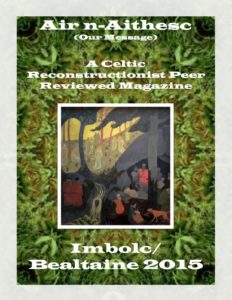 The tales of Finn Mac Cumhail’s Fíanna capture the imaginations of many following Gaelic ways, but only a few have really explored the possible realities behind them. Many approaching the cultural material dismiss the tales as purely fictional or as retellings of stories of Gods made human for Christian audiences. While Finn may have been originally a God of the A few in the Pagan community have claimed these bands comparable to modern special forces while claiming the “tribal warriors” would have been “regular army.”[i]Perhaps this is due to how extreme some seem to feel the initiatory testing, which is below, to be. However, if we were to make a modern analogy, it would be far more accurate to compare the Fíanna with the Boy Scouts; violent Boy Scout troops which not every boy survived to become “tribal díberga,” which is usually translated as “brigands,” we are speaking of very violent Boy Scouts, often with vows of vengeance to carry out. [ii] The modern Irish “díbheirg” means “wrath” or “vengeance,” which points to the importance of this aspect.[iii]
The tales of Finn Mac Cumhail’s Fíanna capture the imaginations of many following Gaelic ways, but only a few have really explored the possible realities behind them. Many approaching the cultural material dismiss the tales as purely fictional or as retellings of stories of Gods made human for Christian audiences. While Finn may have been originally a God of the A few in the Pagan community have claimed these bands comparable to modern special forces while claiming the “tribal warriors” would have been “regular army.”[i]Perhaps this is due to how extreme some seem to feel the initiatory testing, which is below, to be. However, if we were to make a modern analogy, it would be far more accurate to compare the Fíanna with the Boy Scouts; violent Boy Scout troops which not every boy survived to become “tribal díberga,” which is usually translated as “brigands,” we are speaking of very violent Boy Scouts, often with vows of vengeance to carry out. [ii] The modern Irish “díbheirg” means “wrath” or “vengeance,” which points to the importance of this aspect.[iii]warriors.” That in other texts as well as legal tracts such warriors were also known as “
war bands, it is clear such warriors also existed.
As I discussed in “Going into Wolf-Shape,” such adolescent bands were found throughout Indo-European cultures and, likely, far earlier. [iv] “Everyone is a fénnid until he takes up husbandry,” Cormac Mac Airt noted to his son, although it is clear that “everyone” really meant males, mostly noble, like themselves.[v] Boys would go from fosterage to wilderness at 14, then those who received their inheritances would rejoin society about the age of 20.[vi] It might be noted that this is the age period that modern neurobiology has recently shown is a time of extreme erratic risk taking, especially for boys. [vii]As one might expect when sending high impulse risk takers off to fight one another in the wilderness, not all of them survived, but there may well not have been sufficient inheritance for all. Some may have had to or even chosen to remain in the wilderness, just as we see Finn and others do in the literature. McCone has noted that early on some continental bands would move on from their overpopulated homelands to found new settlements.[viii] Where and when this wasn’t possible, it seems some remained in the wilderness until they were likely killed in fighting or managed to die of old age.[ix]
We can only speculate whether any may have chosen to remain in what seems a Pagan lifestyle well into the Christian era, [x] out of preference. While I hope some of what I share may help develop training and path work for teenagers, my own interest is with the more chronic Outlaws, which are clearly the “norm” in heroes of the Fenian literature and likely also existed in reality.[xi] I believe that these Outlaw bands have much to offer for those of us who realize we cannot replicate early society itself; or who may realize that we fit better in the wilderness than we ever would have in early Christian or even pre-Christian, what little we know of it, society.
The question becomes how we move into this liminal state.
You can read the rest by purchasing Air n-Aithesc vol. II issue 1
[i] Such a conversation took place in a Facebook group I run, Clann na Morrígna, but I have heard or read it in many conversations over the past couple of decades.[ii] Richard Sharpe, “Hiberno-Latin Laicus, Irish Láech and the Devil’s Men,” Ériu 30, 1979; Kim McCone, “Werewolves, Cyclopes, Díberga and Fíanna: Juvenile Delinquency in Early Ireland” Cambridge Medieval Celtic Studies, issue 12, 1986; one example is Whitley Stokes, ed. and trans., “The Destructionof Da Derga’s Hostel” (Togail Bruidne Da Derga), Revue Celtique. volume 22, (1901) pg. 7, 29-30; legal tracts are also noted in D. A. Binchy, “Bretha Crólige,” Ériu 12, 1938, pg. 41, Fergus Kelly. A Guide to Early Irish Law, Dublin: Dublin Institute for Advanced Studies (School of Celtic Studies), 2001, pg. 10, 60[iii] Dónall P. Ò Baoill, ed., Foclóir Póca , Dublin: An Gúm, 1992, pg 338; My thanks to C. Lee Vermeers for noting this in the review of this essay for Air n-Aithesc.[iv] Saigh Kym Lambert “Going into Wolf-Shape,” Air n-Aithesc Volume 1 Issue 1 Imbolc 2014, pg. 29-50[v] “fénnid cách co trebad” Kuno Meyer, The Instructions of Cormac mac Airt, RIA Todd Lecture 15, Dublin 1909, pg 46, 31-10, C. Lee Vermeers, Teagasca: The Instructions of Cormac Mac Airt, Faoladh Books, 2014, including footnote 346, pg. 77-78[vi] McCone, “Werewolves, Cyclopes…,” pg. 11-19; the specific age is noted by McCone, “The Celtic and Indo-European origins of the fían,” Sharon J. Arbuthnot and Geraldine Parsons, eds., The Gaelic Finn Tradition, Dublin: Four Courts Press, 2012, pg. 17-18; Joseph Falaky Nagy. The Wisdom of the Outlaw: The Boyhood Deeds of Finn in Gaelic Narrative Tradition,Berkeley: University of California Press, 1985, pg 20-21[vii] B.J. Casey, B.E Kosofsky, PG. Bhide, eds., Teenage Brains: Think Different?, Switzerland: Kargar Publishers, 2014 (I admit to only reading portions and that it is quite over my head, but for those who are working with teens, I believe it may be a very important study)[viii] McCone, “The Celtic and Indo-European origins of the fían,” pg. 23-27[ix] McCone, “Werewolves, Cyclopes…,” pg. 11; McCone, “The Celtic and Indo-European origins of the fían,” pg. 17-18[x]McCone, “Werewolves,….” pg. 2-3; Sharpe , “Hiberno-Latin Laicus, Irish Láech and the Devil’s Men,” pg.83-92, Katharine Sims, “Gaelic Warfare in the Middle Ages,” in Thomas Bartlett and Keith Jeffery eds., A Military History of Ireland, New York: Cambridge University Press, 1996, pg. 100-101
Copyright © 2015 Saigh Kym Lambert
Excerpt from “Going into Wolf-Shape”
This is my last of the excerpts from past issues of Air n-Aithesc that I have to share. I have previously posted excerpts from “Muimme naFiann: Foster-mother of heroes” and ‘“By Force in the Battlefield”: Finding the Irish Female Hero’. The rest of this one can be found in the first issue, Vol 1, Issue 1.
 The next issue should be out at Imbolc, in just a few weeks. I will try to post excerpts in a more timely manner at that point. ~;) Or maybe I’ll even blog something else. ~:p
The next issue should be out at Imbolc, in just a few weeks. I will try to post excerpts in a more timely manner at that point. ~;) Or maybe I’ll even blog something else. ~:p
Going into Wolf-Shape
Humans have lived with dogs for possibly somewhere between 18,800 and 32,100 years, earlier than previously believed.[i]Given highly social nature of both humans and canines and our mutual ability to hunt in groups requiring good communication skills, it seems natural that the relationship would have started when we were hunter-gatherers. Early Neolithic dog burials in Siberia suggest that during this period dogs held an high status not far below humans, beyond their “utilitarian” usefulness.[ii] How natural the relationship is between humans and canines is something most who live with dogs would readily argue, our ability to relate is a given for us. Science has been proving this point, communication and emotional response are strong and similar.[iii]It would be more amazing if humans and wolves—for dogs are wolves who choose to adapt to live in human packs—had not bonded.
There is a great deal of lore and history regarding the importance of dogs among the Gaelic and other Indo-European cultures. Recent genetic testing has revealed that the rose-eared sighthound originated among the Celtic people.[iv] This ancient hound was the ancestor of the modern Greyhound, the Scottish Deerhound, as well as the Galgo Español, which is probably very similar to the ancient hounds. The warrior and the canine are repeatedly linked in Irish lore. One Irish term for wolf, “mac tire” (literally “son of the land”), seems to have first meant a “vagabond warrior” came to primarily mean “wolf.”[v] Many warriors and kings bore “hound” or “wolf” in their names.[vi] The most recognized is Cú Chulainn, who, as a child, took the very role he became named for, “Culainn’s hound,” after killing the smith’s original guard dog in self-defense.[vii] The Fíanna were renowned for their hunting hounds.[viii]
Read the rest by purchasing Air n-Aithesc Vol 1, Issue 1
[i] Elizabeth Pennisi, “Old Dogs Teach a New Lesson About Canine Origins” Science Magazine Vol. 342 no. 6160, November, 15 2013 http://www.sciencemag.org/content/342/6160/785.full
[ii] Robert J. Losey, et al “Burying Dogs in Ancient Cis-Baikal, Siberia: Temporal Trends and Relationships with Human Diet and Subsistence Practices,” PLoS ONE 8(5) 2013 http://www.plosone.org/article/info:doi/10.1371/journal.pone.0063740?
[iii] Gregory Berns, How Dogs Love Us: A Neuroscientist and His Adopted Dog Decode the Canine Brain, New Harvest, 2013
[iv] Heidi G. Parker, Lisa V. Kim, Nathan B. Sutter et al, Genetic Structure of the Purebred Domestic Dog Science, 21 May, 2004: Vol. 304 no. 5674, pg. 1160-1164 https://www.princeton.edu/genomics/kruglyak/publication/PDF/2004_Parker_Genetic.pdf
[v] Kim McCone, “Varia II.” Ériu 36, 1985 pg. pg. 173
[vi] Joseph Falaky Nagy, The Wisdom of the Outlaw: The Boyhood Deeds of Finn in Gaelic Narrative Tradition, Berkeley: University of California Press, 1985, pg. 44, although far more is in this pages notes 19-22 found on 243-245; McCone, “Aided Cheltchair Maic Uthechair pg. 1-30, especially noted on pg. 12-14
[vii]Cecile O’Rahilly, trans., Táin Bó Cúalngefrom Book of Leinster Dublin: Dublin Institute for Advanced Studies, 1967 English http://www.ucc.ie/celt/published/T301035/index.html Irish http://www.ucc.ie/celt/published/G301035/index.html pg. 23-25, 160-163; O’Rahilly, trans. Táin Bó Cúalnge, Recession 1 Dublin: Dublin Institute for Advanced Studies, 1976 English http://www.ucc.ie/celt/published/T301012/index.html Irish http://www.ucc.ie/celt/published/G301012/index.html pg. 17-19,140-142
[viii] J. R. Reinhard and V. E. Hull, “Bran and Sceolang,” Speculum 11, 1936, pg. 42-58, Nagy, The Wisdom of the Outlaw, pg. 44, 95-97
Copyright © 2014 Saigh Kym Lambert
Books and Gratitude
Sometimes the hardest part of writing is the writing, sometimes it’s about finding the time. As I’m not working full time, I have the time, but couple that with living in a rural area with a library which seems unable to ever get anything on inter-library loan, it’s often getting research material. There are, of course, some great online resources which I use extensively, Corpus of Electronic Text (CELT), Celtic Digital Initiative, Archive.org and JSTOR (which now allows for some access to those of us far from university libraries for example. But books still under copyright tend to be a bit pricey.
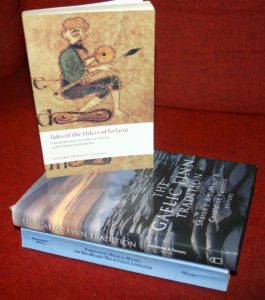 So taking Maya St.Clair’s, who blogs as Irish Thoughts and Musings, reviews books at Celtic Scholar’s Reviews and Opinions, is a cohort at Air n-Aithesc (and really does most of the work) and runs ÁRCHÚ -Anti-Racist Celts and Heathens Unite FB page, advice I put up both a “tip jar” (aka PayPal) and an Amazon.com wishlist link on the side bar here. You know, in case anyone who reads this blog and website or my other writing that I don’t get paid for wants to let me know they found value in it.
So taking Maya St.Clair’s, who blogs as Irish Thoughts and Musings, reviews books at Celtic Scholar’s Reviews and Opinions, is a cohort at Air n-Aithesc (and really does most of the work) and runs ÁRCHÚ -Anti-Racist Celts and Heathens Unite FB page, advice I put up both a “tip jar” (aka PayPal) and an Amazon.com wishlist link on the side bar here. You know, in case anyone who reads this blog and website or my other writing that I don’t get paid for wants to let me know they found value in it.
And then Maya promptly bought me a copy of The Gaelic Finn Tradition edited by Sharon J. Arbuthnot and Geraldine Parsons, which I felt was likely vital even before reading Maya’s review in AnA. I have only read a few of the essays, starting with McCone’s and Nagy’s, naturally, but feel it is, indeed very useful. It does make me wonder what happened to the proposed updating of Nagy’s Wisdom of the Outlaw and McCone’s upcoming book that he refers to, The Romulus Syndrome.
John M.E. Machate of Trials of a Féinnid was kind enough to make a donation as well, which enabled me to finally get a copy of Phillip Bernhardt-House’s Werewolves, Magical Hounds and Dog-Headed Men in Celtic Literature: A Typological Study of Shape-Shifting which I felt was mandatory for Teh Project and wish I had had for “Going in Wolf-Shape” in the first AnA. It should allow me to punch up a future AnA piece, however. For personal reason around this, I used the rest to make a small donation to a horse rescue.
Domi O’Brien of Grove of the Golden Leaves, DANA, who already keeps me well stocked in fiction which I will be passing on or donating for fundraising, gifted me in triplicate, which is in keeping. She gave me a Kindle (hence it’s not in the photo…and no, I haven’ succumbed to buying a device but instead have it on my PC) of An Introduction to Early Irish Literature by Muireann Ní Bhrolcháin which I wanted to check out as a possible background reference and because I’m wanting to update my general reading list a bit, having realized that much of it dates back to my college days 20+ years ago and some was old then. Again, Maya’s review a couple of years ago made me interested. So, no not everything I might list will be specific to the topic of Teh Project. I am finding it quite well puttogether, even if she considered Nemain one of the Morrígna, which simply is not borne out by the literature…related, yes, one of, no…one of the Badba, kind of…because it’s all tricky like that. She makes up for this in her section on the Fenian matter, by referencing the work Nagy and McCone have done relating these stories to canines and actual warbands, which is still rare to find.
Domi also gave me enough money to renew on of my URLs which I had been debating whether I would or not (but many still link to it….I might not renew it next year so if you use cyberpict.net to link to my website, it’s now dunsgathan.net and the older one resolves into it) as well as buy Anne Dooley and Harry Roe’s Tales of the Elders of Ireland: A New Translation of Acallam na Senórach as the AnS is rather vital to my work and this is considered an excellent translation. I have yet to delve in, however.
So, thank you, Maya, John and Domi! I hope you are going to appreciate the work you have helped move on. ~:) And, yes, I am working on it all.
I should also note that there have been many people who have helped me get articles that I could not otherwise get. I have not had a chance, however, to make sure they were all okay with me mentioning their names here…I will, however, at some point thank those who do agree publicly.
Publication Announcement – Air n-Aithesc (Our Message)
As with many things, it starts with a bit of a bitch session. After over a decade of only writing to self-publish online, I was looking for places to submit articles to. You know magazines or anthologies. Especially after the synchronicitic experience of having finished a long ass piece on the War Goddesses and finding out about an anthology for An Morrígan calling for submissions (which I should have announcement about soon). Keltria Journal had some warrior path themes and I submitted a couple of pieces, the two issues became one so only one ran. Such themes and anthologies don’t happen much and, well, it’s what I write….which is why this blog is probably going to always be more active than Dùn Sgàthan Homestead blog. And most Pagan journals that are out there aren’t always looking for Celtic Reconstructionist Pagan, endnote heavy, pieces…and if they are they tend to be looking for CRP 101 stuff or other material about CRP rather than topical material using Reconstructionist methodology.
So, the whole “there needs to be a CR magazine and it needs to be peer reviewed” thing came up. And Maya St.Clair responded with, “yeah, so let’s do it.” (paaraphrase) And Air n-Aithesc (Our Message) was conceived. We asked a bunch of others we knew to join us, some of them even accepted. Another will soon be added to that list. We decided to do it for Imbolg and given the time frame to get members of the review committee to write for the first issue. And some of us did. Hey, I had one article left over too, so I submitted two. Other contributors from our committee were Maya with her column offering basic information for those new to CR “An Seomra Staidéir: The Study” and review of Early Christian Ireland by Kathleen Hughes, Finnchuill with a piece on “Brigit’s Retinue in the Tuatha Dé Miscellany,” Morgan Daimler who wrote about “Celebrating Imbolc with the Family”, Ceffyl Aedui on “Finding Epona” (we are not a Gaelic only publication…even if it might lean heavily there) and Blackbird O’Connell with a review of the book Pot O’Gold by Kathleen Krull.
My articles are “‘By Force in the Battlefield’: Finding the Irish Female Hero” and “Going into Wolf Shape.” The first is explained by the subtitle. The second is part of an ongoing exploration of the wolf warrior cults, which I sometimes touch upon here. I am already working on future articles, all of which will follow such themes.
The first issue came out on Tuesday and can be ordered either as digital or hard copy (with free digital) right here.
We are already looking for submissions for the second issue which will be out for Lùnasdal. We are not doing themed issues, as we feel that is too limiting, so we are open to any topic of interest to CRPs and which use CR methodology. We hope to have a wide variety of paths represented as we go along (we were going to have a list of possible paths, but realized it was on one hand getting very long and on the other we’d leave someone out and…it seemed best to skip it). We sort of have two different “options,” articles which are research focused only or articles which discuss practice and experience using research to solidify things. These latter are most welcome, as this is the essence of CR methodology and we all feel there needs to be more that shows how we bring these elements into our actual practice. It is also, of course, often the hardest thing to write about for many of us. All submissions will be reviewed by a quorum of the review committee. We also have a lovely pool of editors, some who are review committee members although not all (and not all of us on the review committee are editors) who will then work to prepare the accepted articles for publication. You can find submission info on our website.
We are also on the lookout for artwork, both for articles and we will feature an artist each. This issue our artist was Casey Bradley. If you are interested in submitting art, you can us through our website. Seriously, we need art work for articles too….don’t make Maya grab photos of me again (honest, I may be vain enough to post them here all the time, but it was not my idea to have them there…too many “women warrior” pieces are problematic and others were well out of our non-existent budget.
No, we are not paying at this time and do not know if that is in the future. What little we take off the top of the cost will go to upgrading our website and promotional efforts (if we, say, go to a festival with a bunch of copies we have to buy those outright ourselves to do it). Payment does mean advertising to cover it, which can create several hassles which I remember from “back in the day” ….we are hesitant to begin that, but have not closed the door either. At this point it’s free digital copies and additions to your CV (if you include Pagan publications on your CV).
I hope you check this out, read this issue and, if you are so inclined, send us material.
Dark Nights and Shadow Hounds
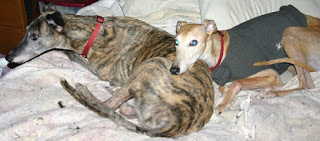 |
| Cù and Òrlaith |
This is another “administrative” post, I suppose, a filler to keep this active. Some may have noticed a slight name change here. There are many reasons for this choice. It does keep a certain theme which runs in other things I do, such as our home’s name. It also perhaps seems pretentious to claim we actually fly with Her/Them, instead we run in Their shadows, with the mad hounds. Which is another aspect which may not seem obvious to anyone but me…the canine theme in what I do seems to be coming through stronger as I go along. It’s, again, the focus of what I’ve been (or was) writing about. It is a subject which I often feel uncomfortable talking about because I do not relate to most of the wolfy identity stuff that is popular. I’m not Otherkin, I don’t identify by any of the “in the wrong body” stuff. And how that is different is often hard to explain. But it’s, in part, what I’ve been trying to work on.
And so, I’ve been working on an article centered around this find. It’s really only a part of the article, but it was a key prompt, if you will. It was hard to deal with some of the ideas of dog sacrifice, even if kept in the past (to be clear I think it’s not something that should be brought back and there is no evidence of it in the Irish material, except for the ever unique Cú Chulainn’s killing of the hound he was named for which may echo this older, far away rite), as we had lost our male Greyhound, Cù Mór this summer. Yes, that often made it hard.
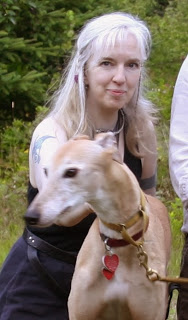 |
| Òrlaith and I just before last Lùnasdal ritual Missing our Cù |
Now our female Greyhound, our only Greyhound now, Òrlaith has bone cancer and will likely, indeed, die this winter. Due to her age, we’ve opted not to have the highly invasive surgery, the removal of her lower jaw and replacement with a prosthetic, and chemo. She’d likely have no chance of a full recovery to the point where she is completely out of pain and the effects of the chemo. We are trying, with the help of her new vets, multiple alternative treatments in hopes to slow it down. But we do not expect miracles. As long as she’s comfortable, happy and eating we’ll keep trying. All her remedies are disguised as treats so it also amounts to spoiling her.
This has made the writing even harder, although I poke at it slowly. After I post this I intend to do more work on it. For the most part, right now, I am working on other aspects of possible initiation rites. But it also brings home my belief at what does make for the appropriate role of dogs and the death of dogs in how I practice. Caring for them, living with them, learning from them…and, when the time comes, giving them a meaningful send off.
Greyhounds are “primitive” in their social pack behavior. While I have always learned from the dogs in my life, I find this breed, so connected also with Gaelic culture, to have perhaps taught me the most on this aspect. The Border Collie crosses which are also part of our pack, have as well. Both breeds retain a lot of the wolf, but have modified it in different ways. The Greyhounds are still pack hunters, the BCs use the same techniques to herd, stopping short of the kill. I watched the Greyhounds teach the BCs, Gleann and Sachairi, a bit more of the social aspects, and Òrlaith has definitely been the leader among the dogs. The boys, including Cù, have practically worshiped the ground she walks on. Meanwhile, she has taken her cues from us, the alphas. We learned from her, and Irony before her, how to be quiet, gentle alphas.
In these past few weeks, she may be thinking herself a bit above us as we spoil her as much as possible. This is an act of worship for me, an honoring of the canine spirit which is a part of me and a connection to something bigger. When she goes we will bury her with the other hounds, Cù, Scolaighe, Bran and Irony, the Shadow Pack….both our living and our dead are called that, but the ones on the other side grow in number. Someday I will be buried among them, at least if my wishes are honored (and such a burial is still legal in NH), along with the bones of my first dog Gabe, who is to be reinterred with me. With us. At our ritual site.
There will be howling for her, both humans and dogs, as we always do. Our funeral rituals are simple, but they are important. The dogs mourn hard, like us they have not fully recovered from losing Cù. When we do ritual we share with those gone on as well. Dogs are always part of our rites, even when they are not at the center of them.
And so, I hope there will be an article finished soon and news about where it will end up. I needed a moment to share this. Because I realize I can’t even describe what a vital part of my path my pack has been and is. That I’d not understand my wolf if I didn’t learn from them. Perhaps others can do it other ways, but I would not be doing this without them. I believe that they are central to my relationship with the War Goddesses, that being Their hound or wolf is far more key for my path than such human identity as “priest/ess.” And all time spent with them is a sort of rite in itself. And so I shall go to be with her.
Rebuilding Her (Their) Cult(s)
If you find this article helpful, please remember this was work to put together and I have animals to feed and vet
Recently Morpheus Ravenna, of Coru Cathubodua,* wrote that she is Not Rebuilding Her Cult in response to others who called for reviving ancient Deity cults and one mentioning that she was doing so for an Morrígan. I’m carrying on the blog cycle, for my first reaction to the title was “Well, I am!”
But that’s not really accurate, either. I have no desire to build a cult and lead it, if that’s what that sounds like. It’s more I feel She or They are trying to rebuild it, that They are seeking people out to follow Them in a manner that is related to the old cult I believed existed. I wouldn’t mind helping to incite Her cult back into existence, however,and to offer evidence of it and ways it might happen today. Although, of course, I may not always like what others do with the information I share, I have learned it’s better to live with that than be control freak (although I might have rants on it, of course). And I’m finding certain pressures to reveal my work despite any concerns that I might have.
The difference in my thinking might be explained in her second paragraph and my own take on the issues she brings up there. One being a different take on what the fact that there was no continuation and no documentation from practitioners of what such a cult was like means for rebuilding. We don’t even know if there ever was a cult to the War Goddesses. But that’s an overall problem with Pagan Gaelic traditions, we have to work with what we got, which is a combination of archaeology, Christian literature and law and some Classical observations (which were fewer for Gaelic cultures), as well as some cross-Indo-European speculations. Which is, of course, where Reconstructionist methodology comes in, we wouldn’t need to reconstruct if this problem wasn’t substantial.
Coming from this methodology also leads to a different take on what such a rebuilt, or reconstructed, cult might look like, today. Despite some “definitions” I’ve seen given that often makes it sound like we intend to practice exactly as our ancestors did (something which is impossible if we can never actually know and need to reconstruct to begin with, as well as living under different laws), “Reconstruction” means that we are using research of the past to reconstruct what such things might look like today, in a culturally related fashion. Neither recreating out of cultural context nor trying to live in a past that is gone. This means that even when we have evidence, not all things will be revived. Just as modern Druids, even Reconstructionist ones, manage to practice without human sacrifice,except symbolically, I believe we can reconstruct the war band cults without actually taking heads. At least until the Revenant Cataclysm finally comes.
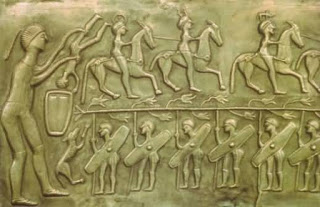 |
| Panel from Gundestrup cauldron
likely showing a warrior initiation |
I do believe that such a cult or cults very likely existed, and I am focused on the war bands as evidence of them. I follow Epstein’s speculation that Cú Chulainn** is a representation of what the Christian scribes interpreted it might have been like.(Epstein, Ch 3). Following her thoughts that there would be similarities to the berserkr (“bear coats”) and ulfheðnar (“wolf coats”) practices of the likely very cultic Germanic warbands, I also extrapolate that we find hints in the stories of the Fíanna, despite actual Goddess connection lacking (although perhaps some hints to it with the female teachers, one named Bodbmall who Epstein notes may connect to the name Badb and she and Nagy have related to Buannan (Nagy, Wisdom of the Outlaw, pg. 102, Epstein, Ch. 2). From there, of course, to the díberga and their relationship to fáelad (wolfing). I find them interesting in their “unsavory” Paganism and withhold bias against them for the general brigand traits the clerics also attributed to them.(see Sharpe for díberga/Fíanna and McCone and West for that and the wolf speculations) I have also been doing a good bit of writing in regards to the canine aspects and how Cú Chulainn actually fits as more of an Outlaw than a tribal warrior, but these are not yet published. (I will, of course, be letting you know in this blog when they are available somewhere)
Although I want to point out that I’m not trying to create conflict between Ravenna’s vision and my own, only to note how we might be viewing particular’s differently as well as may have different focuses on thie history. Regarding the points Morpheus makes in her post. With location I am, as long time readers have likely figured out, focused on the War Goddesses in Gaelic culture only. I do however look for relevant similarities found not only in the other Celtic cultures, but, also Germanic ones as there do seem to be many correlations between the war band cults of these cultures, although the Germanic are often to male Deities. I do agree that the title an Morrígan may well have been held by many regional Goddesses, although I follow Stokes, Epstein and others regarding the title “Morrígan” as more common and older than “Mórrígan” and therefore means “Phantom Queen” rather than “Great (or Big) Queen” which is a later folk etymology (Stokes, pg. 128, Epstein Ch. 1 “etymologies,” I also go into this a good bit in some upcoming work) and may not bear relation to the “Great Queens” of Brythonic cultures which. Therefore my focus is with working within a Gaelic framework, although I would hope to network with those who might revive war band cults from other cultures. It does, however, lead to a certain flexibility and understanding that more than one actual cult is likely, should any start up again or not.
As for seasons, there is a preponderance of focus on Samain† in the tales an Morrígan is strongly featured in. However, this does seem to have been a time relating to Otherworldly and special events. While wars in the tales often start at this time, we also have later Fenian tales that note that warfare ceased from Samain to Beltene,. Other accounts, and archaeology, does seem to point that warfare and raiding did seem to quiet, if not cease, at Samain, but raiding started up around Imbolc.(Patterson pg. 123, 132-133) Given the link with the warbands and wolves, as well as this return to raiding, I also link Imbolc, or the period between Imbolc and Beltene, with specific work on Awakening the Wolf. Lugnasad, a time of festivals involving horse racing, has been linked specifically to the sister War Goddess Macha. Therefore there is no specific season for me in regard, there may just be difference in focus, devotions of a modern cult might turn inwards more during the winter months, and outward during the summer, in keeping with the tales or might alter depending on seasonal changes in location. Modernizing this doesn’t seem to be a large issue for me.
Incidental or temporal worship already seems carried over by many us anyway, again, within the bounds of legality. Taking omens, making offerings (even if subtly) for specific reasons in specific places is not a large issue. It would, undoubtedly, be an issue for those professional warriors upon battlefields, but this is where we adapt to the situations we are in. And, after all, incidental worship is about adapting.
It is devotional practice is what gets to the meat of it. That which was done, that which we can do now based on the evidence. It might also be where difference in seeing a rebuilding or a new tradition might come in. I already noted, that if in general CRs have had to forgo human sacrifice or adopt symbolic practices (many of which are later folk practices such as the Bealtuinn “sacrifice”) I think we can manage to refrain from piling actual heads. A few modern Gaels I know are quite into the symbolism all the same. Of course, “war spoils” and other related votive offerings can be easily retranslated to modern context of what we find symbolic.
But as I noted, I relate the cult to the Outlaw war bands, what may well have been a Pagan subculture of the early Christian culture. (see McCone, Sharpe, West) Therefore my focus is on the practices which we can interpret about these bands, even in the face of the rather negative reputations the díberga might have, especially in some saint tales. Devotion to me may not be that far off from the non-battle things these warriors offered. Their bodies, their effort into training and preparing. Whether one becomes a full, literally blooded, warrior or not, the training part is there for all of us who do walk the warrior path.
But, again, as I noted above, I also see this as ecstatic practice “shape-shifting” …for me it’s canine, for others I’ve talked to there may be corvid. This may be about out-of-body travel or about an embodied fugue state, strengthening the trained body. (I will eventually have an announcement on something on this). While I am often focused, especially in this blog, on the practical, I feel it’s important to have the ecstatic aspect as well, at least for those so inclined. (No one said every member of a cult would necessarily do the exact same things)
So for me rebuilding Her/Their Cult/s is about the devotional practices, often very embodied ones. And in a modern context. These things would vary by whether one is a professional soldier or a, well, amateur walking the warrior path, of course, as well as on ability and talents. But it would involved fitness, practical martial arts training (which may not always be traditionally Gaelic and could include firearms training), culturally traditional Gaelic martial arts training (which may not always be practical), ecstatic shape-shifting, Seership, poetry and other arts. Not all in the cult might be warriors, we have in the Fenian material druids who helped train Finn in the Sight, after all. But it would be the key focus. I also see an importance on preparedness for a variety of situations, as well….after all, many of us amateur path walkers seem to be preppers. For some of us, hunting, foraging and deep wilderness exploration might connect us to the Outlaw role as well. Again, we must adapt for hunting seasons are almost the opposite now as they were in early Irish law. (Patterson)
There is, of course, what a cult provides, both members and community, as I believe that service is a key role. The war bands may not have been in the society, but they did serve it. This is not necessarily focused on our “religious” or cultural communities, but should probably include or physical neighbors of all cultural and religious backgrounds. The professional, soldier, LEO or related, serves a broad community in obvious ways. Others might volunteer for CERT (Community Emergency Response Team), help organize the local community to deal with disaster and long-term preparedness, teach martial arts and/or self-defense, become victims’ advocates, do volunteer escort in dangerous areas (working with a proper community organization and within their guidelines). And, of course, providing appropriate rituals for those who do worship our Gods when they have need of the War Goddesses.
Needs for members would vary for the professional warrior who has seen combat and is returning to her family, but also for the rape survivor who is moving from victim to hero in her own story. Rituals can be developed for such transitions based on literary references. Makings sure cult members are served by the cult, creating a support system for each other, is a part of the reason to have such a cult, after all. Because it is true, this is not an easy worship, not even for those of us just on the path who might never be blooded as full warriors. For those who are blooded, it is often traumatic so support within a cult would be vital. Ritual, counseling, intervention, just having the right people to connect with and help each other connect to the Goddess we serve. ETA: Perhaps even a good hurling team can be a part of that healing. How long a cult member might be in the cult may vary individually and by need as well. A soldier may find her/himself drawn to service of a War Goddess, but wish cleansing and to move away from the cult when returning to civilian life while others may be, as Nagy put it, “chronic Outlaws.”
I feel that cults based on what we know of the culture, kept in cultural perspective but adapted for the laws we live under, is fully possible using Reconstructionist methodology. I also believe it’s something They want and I hope to see more cultic development in my lifetime. In fact, I’m smelling things on the wind which I think might become very interesting.
*ETA: I now need to note that I in no way associated with this group. I had only ever read the blog and for awhile some members where in my FB War Goddess group. As I am a devotee to Macha who has vowed to fight for Her horses and to end horse slaughter, I no longer have even that amount of contact due to the group eating horse meat in a misguided and loathsome attempt to somehow honor Her. Doing this is as close to sacrilege as I could even imagine. Therefore do not read this mention of the post, done before I knew about this, to be any sort of recommendation. Please see another blog I write for Heathens and Pagans for the Horses
**This relationship seems problematic as most see conflict and rejection between Cú Chulainn and the Morrígan. However, looked at from from the warrior path apparent antagonism begins to make sense that She challenges and goads him, he comes back with the arrogance She expects and he rejects the easy victory as he is also expected to do. No one said serving a War Goddess was simple, straightforward or painless.
†I am using the older spellings here, rather than the Scottish Gaelic ones which are my preference as this is relating literature and history.
Angelique Gulermovich Epstein, “War Goddess: the Morrígan and her Germano-Celtic Counterparts” dissertation for UCLA, 1998
Kim McCone, “Varia II” Ériu 36, 1985
Kim McCone “Werewolves, Cyclopes, Díberga and Fíanna: Juvenile Delinquency in Early Ireland” Cambridge Medieval Celtic Studies, issue 12, 1986
Joseph Falaky Nagy. The Wisdom of the Outlaw: The Boyhood Deeds of Finn in Gaelic Narrative Tradition, Berkeley: University of California Press, 1985
Nerys Patterson. Cattle Lords & Clansmen: The Social Structure of Early Ireland, Notre Dame, IN: University of Notre Dame, 1994
Richard Sharpe, “Laicus, Irish Láech and the Devil’s Men,” Ériu 30, 1979
Whitley Stokes, trans. “The Second Battle of Moytura” Revue Celtique 12
Máire West, “Aspects of díberg in the tale TogailBruidne Da Derga,”Zeitschrift für celtische Philologie (ZcP) , Volume 49-50, 1997
copyright © 2013 Saigh Kym Lambert
